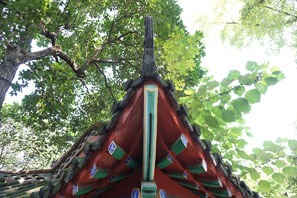

In Records of the Grand Historian 《史记》, Zhang Qian (164 – 114 BC), an envoy of Emperor Wu of the Han dynasty, is credited with bringing the rare horses back to China after he visited states to the west of China’s borders.Īccording to legend, the heavenly horse soars through the sky with its large wings while the sea horse gallops underwater with its scaly skin and rubbery mane (quite different from the creatures known as seahorses today). The Sea Horse (海马) and the Heavenly Horse (天马), next in line (sometimes in reverse order) after the lion, are both said to have come from Central Asia. It’s said that the Suanni enjoys being surrounded with smoke therefore, it can often be found in statues in temples and carved into incense burners. The Suanni is considered one of the nine sons of the dragon, and more fierce than the lion. The lion is similar in function and appearance to the seventh (or sometimes sixth) creature, the Suanni (狻猊).

Lion sculptures are frequently placed in front gates and entrances as its ferocious appearance and aura are said to protect dwellings from evil spirits. Regarded as the king of all animals and a guardian spirit (护法) by Buddhists, the lion represented power. The third animal on the palace roof, after the phoenix, is the lion.

This notion lives on in the idiom “龙凤呈祥 (the dragon and phoenix bring good fortune)” which refers to extremely good luck.Īnother mythical creature that was believed to prevent fire is the yayu (押鱼), the sixth (or sometimes seventh) animal, which is shaped like a cross between a dragon and a fish, and is said to be the commander of all underwater creatures. It was often depicted as companion of the dragon, and their combination was believed to bring good fortune and prosperity. The phoenix, the “king of all birds,” comes next. The first animal, the dragon, is known as the commander of all rivers and waterways, so was believed to dispel the threat of fire to the mostly wooden palace. The next two mythical creatures in the row are the dragon and phoenix, which symbolized the emperor’s divine power. The rooster (which may have originally been a phoenix) is said to have rescued the king of the ancient Qi state when he fled from battle. The formation starts with a curious rooster-riding deity. Right to left: The Rooster-Riding Immortal, the Dragon, the Phoenix, the Lion, the Sea Horse, the Heavenly Horse, the Yayu, the Suanni, the Xiezhi, the Douniu, and the Xingshi The ornate row of ten animals plated gold placed atop the Hall of Supreme Harmony, and elsewhere in the Forbidden City, was meant for exorcising evil spirits and to display the wealth and power of the imperial family. According to traditional feng shui concepts, placing mythical animals on rooftops will help dispel evil spirits. These adornments, known as “ridge beasts (脊兽)” or “house-ridge beasts (屋脊兽),” were deliberately placed on the roof-ridges of the palace halls, as auspicious totems for the former imperial court. But should tourists gaze up to the roofs of the vast vermilion-and-gold complex, they will find the ancient palace’s original animal guardians: rows of ceramic beasts which stand watch over the ground below.
CHINESE ROOFS SERIES
Cats seem to have become official mascots of Beijing’s Forbidden City, which has developed merchandise and even a book series on the stray felines that live on its grounds.


 0 kommentar(er)
0 kommentar(er)
